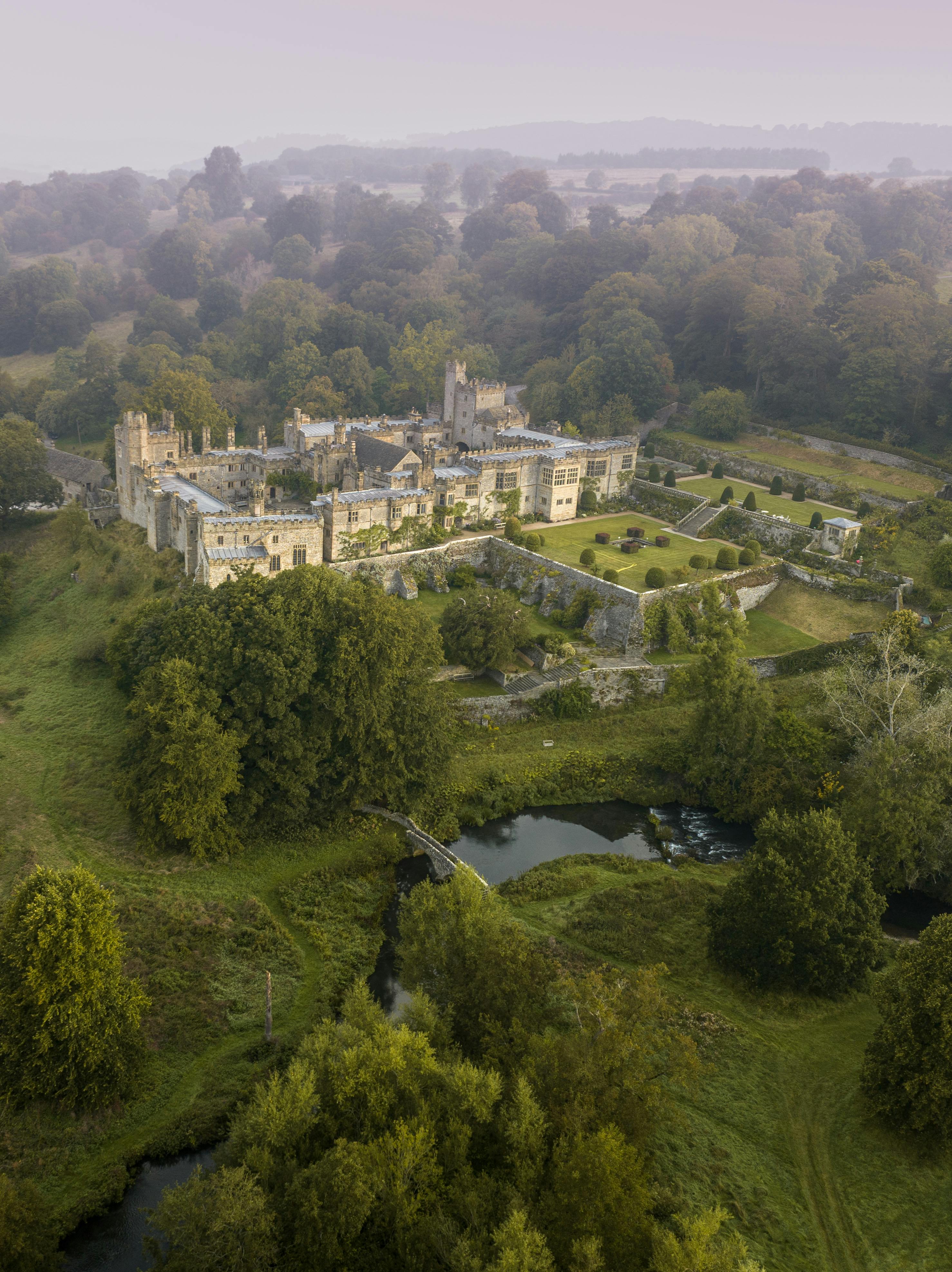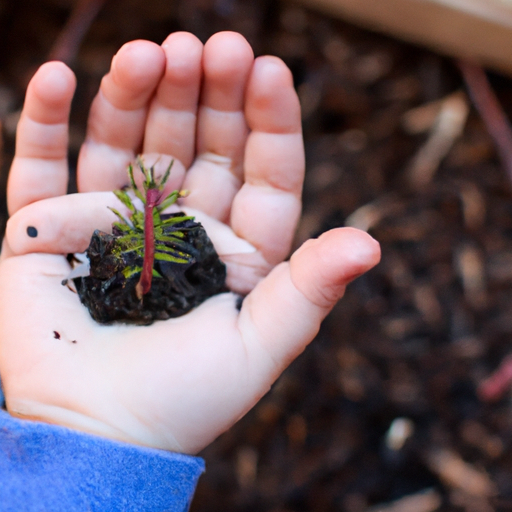You’re enjoying the lovely view of your yard when you notice a cluster of little trees sprouting up in various corners. As much as you appreciate nature, these small, unwanted intruders are starting to become a nuisance. You find yourself wondering, “How do I get rid of these little trees in my yard?” We all want a well-manicured space where we can relax and entertain, so let’s explore some effective methods to bid farewell to these uninvited guests and reclaim the beauty of your yard.
Identifying the Problem
Determining the Types of Little Trees
When it comes to getting rid of little trees in your yard, the first step is to accurately identify the types of trees you are dealing with. Understanding the specific species of the little trees is crucial because it will help you determine the most effective methods of removal. Some common types of little trees that may plague your yard include saplings of oak, maple, birch, and pine trees, just to name a few. By familiarizing yourself with the characteristics of different tree species, such as their leaves and bark, you can confidently identify the little trees and proceed with the appropriate course of action.
Understanding the Growth Patterns of Little Trees
Once you have identified the types of little trees in your yard, it is important to understand their growth patterns. This knowledge will help you assess the extent of the problem and plan the most efficient removal strategy. Some little trees have shallow root systems, while others have deeper roots that can penetrate the ground more extensively. Knowing the growth patterns of the trees will enable you to determine whether the removal process will require manual methods or chemical intervention. Additionally, understanding how quickly the little trees grow will give you an idea of the timeframe in which you should take action to prevent further spread.
Recognizing the Potential Hazards of Little Trees
While little trees may seem harmless and inconspicuous at first, ignoring their presence can lead to various hazards. As they continue to grow, little trees can become a nuisance, interfering with the growth of other plants in your yard. They may compete for nutrients, sunlight, and water, stunting the growth of your desired vegetation. Furthermore, little trees can pose a risk to nearby structures, such as fences and buildings. As their branches mature, they have the potential to cause damage during storms or high winds. Recognizing these potential hazards will motivate you to address the little tree problem promptly and prevent any further complications.
Assessing the Situation
Examining the Size and Number of Little Trees
Before deciding on the appropriate removal method, it is important to examine the size and number of the little trees in your yard. Some small trees may be easily managed through manual methods, while larger ones may require professional assistance. Assess the height and girth of the little trees to determine if pruning or cutting them down is a viable option. Additionally, counting the number of little trees will help you gauge the extent of the problem and plan accordingly. This evaluation will enable you to make an informed decision about how to approach the removal process.
Considering the Impact on Other Plants and Structures
When contemplating the removal of little trees in your yard, it is essential to consider the potential impact on other plants and structures. removing little trees too aggressively or indiscriminately can disrupt the ecosystem of your yard and harm surrounding vegetation. Carefully evaluate the proximity of the little trees to your desired plants and structures and determine if their removal will create any adverse effects. For instance, removing a little tree near a large tree may affect the stability of the larger tree. By considering these factors, you can choose the most appropriate methods that minimize damage to your existing landscape.
Evaluating the Difficulty of Removal
Another aspect to consider when dealing with little trees in your yard is the difficulty of their removal. Some little trees, especially those with shallow root systems, can be easily uprooted or pruned using manual methods. However, other species may have deep and extensive roots, making removal more challenging. Additionally, the location and accessibility of the little trees play a role in determining the level of difficulty. Little trees in hard-to-reach places, near structures, or intertwined with other plants may require the expertise of professionals. Evaluating the difficulty level will help you decide whether to tackle the problem on your own or seek assistance.

Manual Methods of Removal
Pruning Little Trees
Pruning is a manual method of removing little trees that is especially effective for smaller or younger trees. By cutting off the branches and foliage of the little tree, you can restrict its growth and prevent it from shading or overshadowing other plants in your yard. To prune a little tree, use sharp and clean pruning shears to make clean cuts at a slight angle just above a bud or lateral branch. Make sure to remove any dead or diseased branches as well. Regularly pruning the little trees in your yard will help maintain their size and prevent them from becoming a bigger problem in the future.
Uprooting Little Trees
For little trees with shallow root systems, uprooting them manually can be an effective removal method. This technique is particularly useful for smaller trees that have not yet established deep roots. To uproot a little tree, start by loosening the soil around the base of the tree using a shovel or garden fork. Once the soil is sufficiently loosened, grip the tree trunk near the base and gently rock it back and forth while pulling upwards. With enough persistence, the little tree should come out of the ground, roots and all. Be sure to fill the hole with soil to prevent any tripping hazards or further growth.
Cutting Down Little Trees
cutting down little trees is a viable method for larger or more mature trees that cannot be easily pruned or uprooted manually. This technique involves using a saw or chainsaw to sever the main trunk of the little tree. Before cutting, it is important to assess the direction in which the tree might fall to ensure it does not cause any damage or injury. If the little tree is near structures or power lines, it is advisable to hire professionals for safe and controlled removal. Once the tree is cut down, the remaining stump can be dealt with using various methods, such as grinding or chemical treatment.
Chemical Methods of Removal
Using Herbicides to Remove Little Trees
When manual methods are not feasible or efficient, herbicides can be employed to remove little trees from your yard. Herbicides are chemical substances specifically formulated to kill or inhibit the growth of unwanted plants, including little trees. It is essential to choose a herbicide that is specifically designed for tree removal and follow the instructions on the label carefully. Apply the herbicide directly onto the little tree’s leaves or trunk, ensuring thorough coverage. Keep in mind that using herbicides may require multiple applications over a period of time to ensure effectiveness.
Applying Systemic Herbicides
Systemic herbicides are a type of herbicide that is absorbed by the little tree and transported throughout its entire system, including the roots. This method of removal is particularly suitable for removing little trees with deep roots or widespread growth patterns. By applying systemic herbicides, you can ensure that the chemical reaches the root system, effectively killing the little tree from within. It is important to be cautious when handling systemic herbicides and strictly follow the instructions provided by the manufacturer to prevent any negative impacts on desirable plants or the environment.
Practicing Caution and Safety
When utilizing chemical methods for the removal of little trees, it is crucial to practice caution and safety. Always wear protective clothing, gloves, and eyewear to prevent direct contact with the herbicides. Follow the instructions on the product labels diligently, including recommended dosage, application methods, and safety precautions. Take into consideration the proximity of the little tree to other plants or water sources to mitigate any potential environmental impact. Additionally, be mindful of any local regulations regarding the use of herbicides to ensure compliance with legal requirements.

Preventing Future Growth
Mulching to Suppress Little Tree Growth
After removing the little trees from your yard, it is important to take preventive measures to suppress future growth. One effective method is to apply mulch around your desired plants and areas where little trees have been removed. Mulch acts as a protective layer that prevents the seeds and sprouts of little trees from germinating and establishing root systems. Apply a layer of organic mulch, such as wood chips or bark, to a thickness of around 2-3 inches. Regularly replenish the mulch to maintain its effectiveness in suppressing little tree growth.
Regular Maintenance to Eliminate Seedlings
Regular maintenance is crucial to keep little trees from reappearing in your yard. Monitor your yard regularly and eliminate any little tree seedlings or sprouts as soon as they emerge. This can be done by hand-pulling the seedlings or using a small garden trowel to dig them out. By addressing little tree growth promptly, you can prevent the problem from becoming overwhelming and avoid the need for more drastic removal methods in the future.
Installing Root Barriers
For areas in your yard where little tree growth is persistent, installing root barriers can be an effective preventive measure. Root barriers are physical barriers made of flexible materials, such as plastic or metal, that can be installed underground to prevent little tree roots from spreading and establishing new growth. Dig a trench around the area where the little trees are an issue and insert the root barrier to a depth of at least 18 inches to deter root penetration. This method can help contain little tree growth and protect your desired plants from being overtaken.
Calling in Professionals
Hiring Arborists for Expert Removal
In some cases, the removal of little trees may be best left to professionals, such as arborists. arborists are trained and experienced in tree care, including the evaluation and removal of unwanted trees. They possess the necessary knowledge and tools to safely and efficiently remove little trees from your yard. Hiring arborists can be particularly beneficial when dealing with larger or more complex little trees. Arborists can also provide valuable advice on tree care and help you develop strategies for maintaining a healthy yard.
Engaging Landscaping Services for Yard Restoration
If the removal of little trees has left your yard in need of restoration, engaging landscaping services can be instrumental in revitalizing your outdoor space. Landscaping professionals can assist in assessing the impact of little tree removal on your existing landscape and develop a plan for rejuvenation. They can recommend suitable replacement plants and implement good landscaping practices to ensure a balanced and aesthetically pleasing yard. By enlisting the help of landscaping services, you can transform your yard into a thriving and beautiful space once again.
Contracting Tree Removal Companies
For more extensive tree removal projects or if you have a large number of little trees to be removed, contracting tree removal companies may be the most efficient option. tree removal companies specialize in the safe and effective removal of trees, including little trees, using advanced equipment and techniques. These professionals have the expertise and resources to handle even the most challenging tree removal situations. By hiring a reputable tree removal company, you can ensure that the little tree problem in your yard is efficiently and professionally resolved.

Environmental Considerations
Choosing Environmentally Friendly Removal Options
When dealing with little trees in your yard, it is important to consider environmentally friendly removal options. Opt for methods that minimize harm to the surrounding environment and ecosystems. Manual methods, such as pruning and uprooting, are generally more environmentally friendly as they do not involve the use of chemicals. If chemical methods are necessary, choose herbicides that are specifically labeled as safe for the environment and follow the recommended application guidelines to minimize any potential negative impact.
Minimizing Harm to Surrounding Flora and Fauna
While removing little trees from your yard, it is crucial to be mindful of the surrounding flora and fauna. Take care not to cause unnecessary damage to other plants or disturb wildlife habitats. When using manual methods, ensure that you are targeting only the little tree you want to remove and not damaging nearby plants. If chemicals are necessary, apply them carefully and avoid overspray onto desirable plants or areas where wildlife may frequent. By exercising caution, you can minimize harm to the natural balance in your yard.
Complying with Local Regulations
Before embarking on any little tree removal project, it is important to familiarize yourself with any local regulations regarding tree removal. Some areas have specific rules and permits in place to protect certain tree species or environmentally sensitive areas. Research and be aware of any regulations that apply to your location to ensure compliance. Violating local regulations can result in penalties and fines, so it is essential to proceed responsibly and within the legal requirements.
Replanting and Maintaining a Healthy Yard
Selecting Suitable Replacement Plants
After successfully removing the little trees from your yard, it is an opportune time to select suitable replacement plants that will thrive in your specific environment. Consider factors such as the amount of sunlight your yard receives, the type of soil, and the overall aesthetic you desire. Choose plants that are compatible with your region’s climate and that require minimal maintenance. By selecting the right plants for your yard, you can create a beautiful and low-maintenance landscape that will deter the growth of unwanted little trees.
Implementing Good Landscaping Practices
Maintaining a healthy yard involves implementing good landscaping practices that promote the well-being of your plants and discourage the growth of little trees. Regularly water and fertilize your plants to provide them with the nutrients they need to thrive and to outcompete any unwanted growth. Additionally, ensure proper spacing between plants to minimize overcrowding and prevent little trees from taking root. Regularly weed your yard to eliminate potential little tree seedlings before they become a problem. By maintaining good landscaping practices, you can prevent the reoccurrence of little trees in your yard.
Regularly Inspecting and Addressing New Growth
Even after successfully removing little trees and implementing preventive measures, it is important to regularly inspect your yard for any signs of new growth. Little tree seeds can be carried by the wind or introduced through birds and wildlife, potentially leading to the reestablishment of unwanted growth. By promptly addressing any new growth that emerges, whether it be through pruning, uprooting, or utilizing chemical methods, you can maintain the integrity of your yard and prevent the proliferation of little trees.

Common Mistakes to Avoid
Using Incorrect Tools and Techniques
One common mistake to avoid when removing little trees is using incorrect tools and techniques. Using dull or improper tools can make the removal process more difficult and less effective. Invest in high-quality pruning shears, saws, and other necessary equipment specific to the size and type of tree you are dealing with. Additionally, learn proper pruning and uprooting techniques to ensure that you are removing the little trees efficiently and without causing unnecessary damage to your yard.
Neglecting Safety Precautions
Neglecting safety precautions during the little tree removal process can lead to accidents and injuries. Always prioritize your safety and that of others when dealing with tree removal. Wear appropriate protective gear, such as gloves, eyewear, and sturdy shoes, to protect yourself from potential hazards. If the removal project is beyond your capabilities or involves dangerous conditions, such as trees near power lines, do not hesitate to contact professionals who have the expertise and equipment to handle the job safely.
Ignoring Proper Disposal Methods
After successfully removing little trees, it is important to dispose of the tree debris properly. Ignoring proper disposal methods can lead to the spread of disease or pests, as well as contribute to environmental pollution. Branches and foliage should be properly bundled and tied for disposal according to local regulations. Some areas may require you to bring the debris to designated collection sites or arrange for professional removal. By disposing of the little tree remnants responsibly, you prevent potential negative impacts on your yard and the surrounding environment.
In conclusion, the process of getting rid of little trees in your yard requires careful identification, assessment, and planning. By determining the types of little trees and understanding their growth patterns, you can choose the most suitable methods of removal. Assessing the size and impact of the little trees, as well as evaluating the difficulty of removal, will help you decide whether to take on the task yourself or call in professionals. Manual methods, such as pruning, uprooting, and cutting down, can be effective for smaller trees, while chemical methods, such as using herbicides, provide alternatives for larger or more stubborn growth. Preventing future growth involves mulching, regular maintenance, and installing root barriers. If the little tree problem persists or requires extensive restoration, hiring arborists or engaging landscaping services may be necessary. Throughout the process, it is important to consider environmental considerations, comply with local regulations, and implement good practices to maintain a healthy yard. By avoiding common mistakes and being mindful of safety, you can successfully rid your yard of little trees and achieve a beautiful and thriving landscape.

